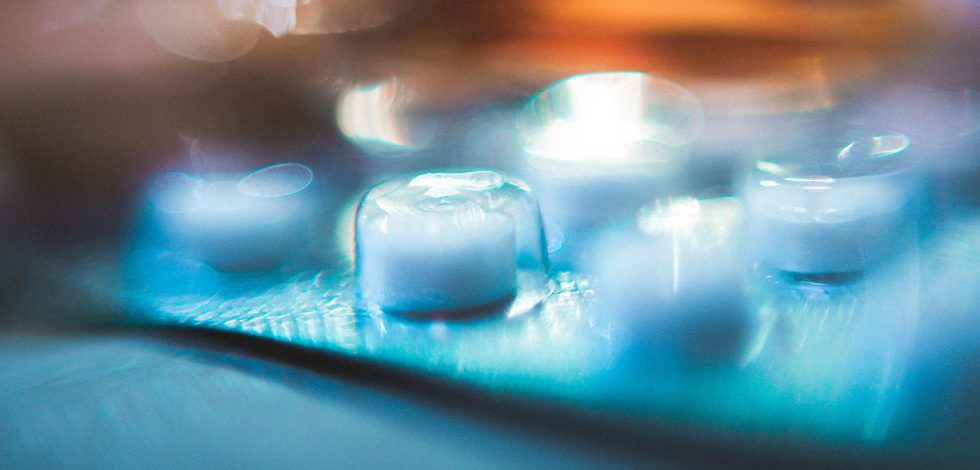Digitalisation is permeating the entire healthcare ecosystem, from diagnosis to treatment, drug research to medical insurance and managing chronic conditions. The applications are many and multiplying, continuing to transform how healthcare is defined.
The aim is to harness digital solutions to deliver better outcomes for patients, whilst compensating for the decline in capacity in health systems. This includes innovations within emerging areas such as Femtech and digital therapeutics as opportunities in both medical-grade and mass-market solutions offer of new ways to manage our health.
Advances in artificial intelligence (AI) and machine learning techniques have further accelerated development across multiple sectors. Pharmaceutical companies and the tech giants have become natural bedfellows. More than 30 major drug manufacturers are reported to be discussing AI partnerships including Biogen and Q1Bit. Additionally, through the analysis of the vast amounts of data already available, AI can yield valuable insights into the efficacy of medicines, nutrition, exercise and other interventions that promote healthier lifestyles via digital therapeutics.
Babylon, for instance, uses machine learning algorithms as well as humans’ medical expertise to improve understanding of how patients describe their symptoms and match these to all possible diagnoses.
BenevolentAI’s have sought to transform the way medicines are discovered, developed, tested and brought to market. Their platform uses AI to help its scientists find new ways to treat disease and personalise medicines to patients through the identification of drug targets that control the mechanism of diseases.
Radiology and histopathology stand to be revolutionised by digitalisation in a similar manner as drug development. Within these areas there is a wealth of imaging data that goes unexploited and through AI capabilities it is now possible to detect and count cells that may be potentially cancerous, increasing the chances for early detection. Adaptix Imaging has patented a 3D X-ray technology that uses a portable flat panel, designed to make radiology for mammograms cheaper, low-dose and more widely available.
New, cheaper and more readily available tests are being developed for diagnosing conditions including cancers, using the technology that is already available to us. Sniffphone and SkinVision have developed cancer screening capabilities from our smartphones to detect 95% sensitivity for skin and gastric cancer.
The rise of Femtech
Closing this gender gap in medical knowledge is a compelling priority for the 2020s to help address unmet needs and gaps in knowledge of women’s health. This has led to further interest in Femtech – healthcare innovations designed for women’s health, with a surge in 2019 of Femtech startups and technology products, apps and hardware addressing women’s health.
Companies like Ava, and Natural Cycles have focussed on fertility tracking, development of bespoke wearable tech and software to analyse physical changes to deduce an individual’s fertility window. NextGen Jane is an example of the disruptive potential of Femtech that sees a woman’s monthly cycle as a natural biopsy; analyzing cells that were shed during menstruation and measuring genomic classifiers for specific diseases to enable earlier diagnosis of devastating reproductive disorders that previously took up to a decade to identify.
New treatments for menopause have also become more available in recent years. ProFam and KaNDy Therapeutics have researched and developed surgical and cryogenic procedures that offers alternatives to extend a woman’s reproductive age and to improve hormone therapy treatments to help alleviate related issues.
Digitalisation is impacting our every day
Digital health permeates into our more day-to-day lives as well. Many digital applications have been developed over the recent years with focus on health monitoring, data gathering and analysis. The impact of Digital Health on patient care is accelerating with the increasing adoption of mobile health (mHealth) apps and wearable sensors. The number of mHealth applications available has been estimated to be over 350,000 according to market researchers and it is expected that investment within this field will continue to increase.
Babylon, the interactive health service application now delivers 4,000 clinical consultations a day and serves more than 4.3 million members worldwide in both developed and emerging markets, using deep learning techniques to analyse symptoms. Since 2017, Babylon has agreed contracts with partners including Prudential, Samsung, Telus, Bupa and the NHS.
Companies like SiHealth have focused their efforts on digitalisation for personalised skin care. The HappySun app developed by SiHealth uses satellite technology to measure personal sun exposure, accurately measure different types of solar radiation with an aim to estimate photobiological effects and provide personalised wellbeing recommendations based on solar radiation, skin type and health risk factors. The HappySun technology can enable these capabilities with both real-time control and solar radiation measurement using satellite technology.
Further developments in wearable technology have continued to revolutionise everyday health diagnostics and maintenance of ongoing health issues. Examples of this within the market include Withings’ Move ECG; a watch with a built-in electrocardiogram (to detect atrial fibrillation in relation to strokes and heart attacks), and new-generation glucometers that are able to continuously monitor glucose levels whilst simultaneously providing analytics and real time information via your smartphone. Such developments have been taken further from collaborations with companies like Google, who has collaborated with both Dexcom and Novartis on revolutionary wearable glucometers. This ranges from a bandage-sized wearable sensor transmitting real-time information to the Cloud, to contact lens that could monitor glucose levels in tears.
The convergence of technologies, speed at which clinical innovations emerge, and inter-connectivity of wearable devices will test evolving regulatory frameworks and risk management as the digitalisation of healthcare moves forward, continuing to spin off applications in diagnostics and health monitoring that seemed far-fetched even a few years ago.
For more trends in health and life sciences, download your copy of “Making science fiction, fact” here:

















No Comments